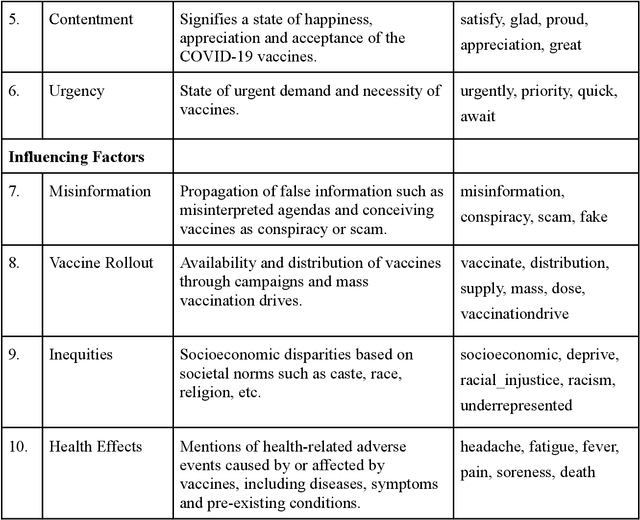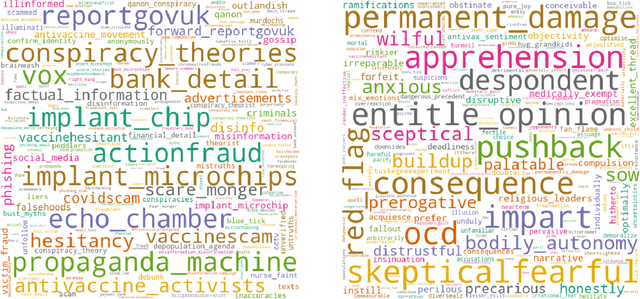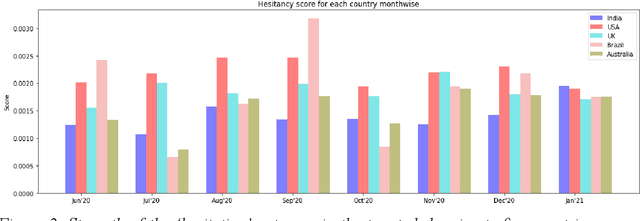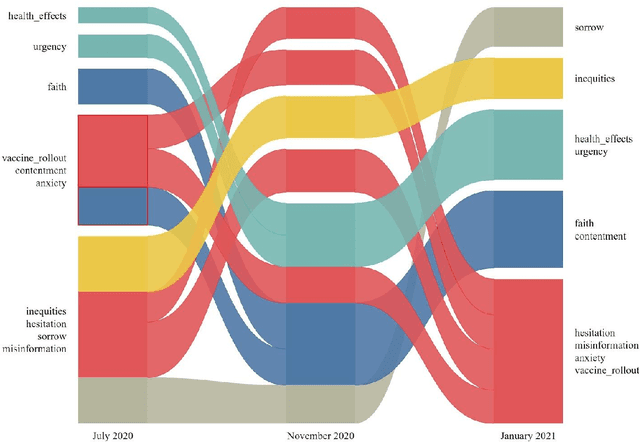Ashima
Mining Trends of COVID-19 Vaccine Beliefs on Twitter with Lexical Embeddings
Apr 02, 2021



Abstract:Social media plays a pivotal role in disseminating news across the globe and acts as a platform for people to express their opinions on a variety of topics. COVID-19 vaccination drives across the globe are accompanied by a wide variety of expressed opinions, often colored by emotions. We extracted a corpus of Twitter posts related to COVID-19 vaccination and created two classes of lexical categories - Emotions and Influencing factors. Using unsupervised word embeddings, we tracked the longitudinal change in the latent space of the lexical categories in five countries with strong vaccine roll-out programs, i.e. India, USA, Brazil, UK, and Australia. Nearly 600 thousand vaccine-related tweets from the United States and India were analyzed for an overall understanding of the situation around the world for the time period of 8 months from June 2020 to January 2021. Cosine distance between lexical categories was used to create similarity networks and modules using community detection algorithms. We demonstrate that negative emotions like hesitancy towards vaccines have a high correlation with health-related effects and misinformation. These associations formed a major module with the highest importance in the network formed for January 2021, when millions of vaccines were administered. The relationship between emotions and influencing factors were found to be variable across the countries. By extracting and visualizing these, we propose that such a framework may be helpful in guiding the design of effective vaccine campaigns and can be used by policymakers for modeling vaccine uptake.
 Add to Chrome
Add to Chrome Add to Firefox
Add to Firefox Add to Edge
Add to Edge